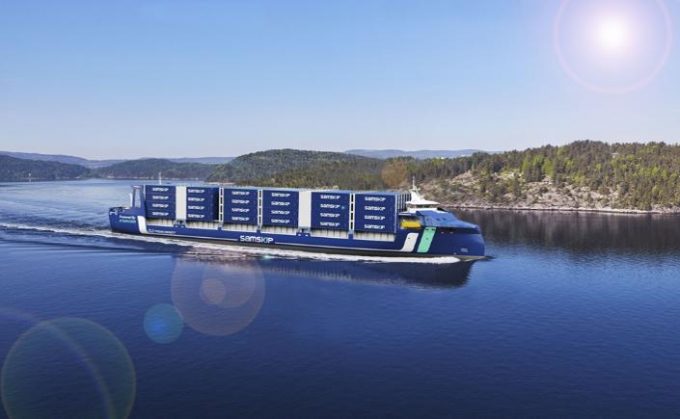Samskip and GoodFuels sailing close to near zero-carbon ship voyages
Samskip and biofuel vendor GoodFuels say they have proved it is possible to reduce a ...

A joint-venture between Samskip and Ocean Infinity has secured Nkr150m ($15m) funding from Norway’s state funding vehicle, Enova, for construction of two 500 teu shortsea feeders, or “SeaShuttles”, to operate on hydrogen, using 3.2MW fuel cells.
The vessels will operate autonomously between Oslo Fjord and Rotterdam, said the carrier.
Are Gråthen, CEO, Samskip Norway, added: “Together, Samskip and Ocean Infinity will also accelerate plans to advance autonomous ship technologies and remote operation of ships and cargo handling equipment. These ships are the ...
Volcanic disruption at Anchorage could hit transpacific airfreight operations
Macron calls for ‘suspension’ – CMA CGM's $20bn US investment in doubt
De minimis exemption on shipments from China to the US will end in May
Forwarders stay cool as US 'liberation day' tariffs threaten 'global trade war'
Looming Trump tariffs will create 'a bureaucratic monster' for Customs
Mixed response in US to 'Liberation Day', while China leads wave of retaliation
Tariffs and de minimis set air freight rates on a volatile course


Comment on this article